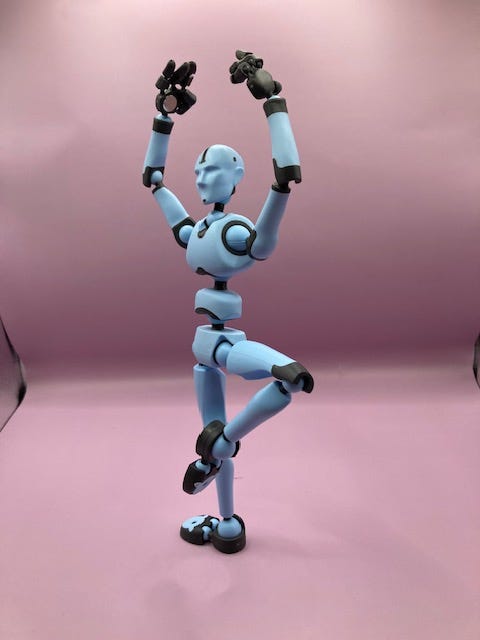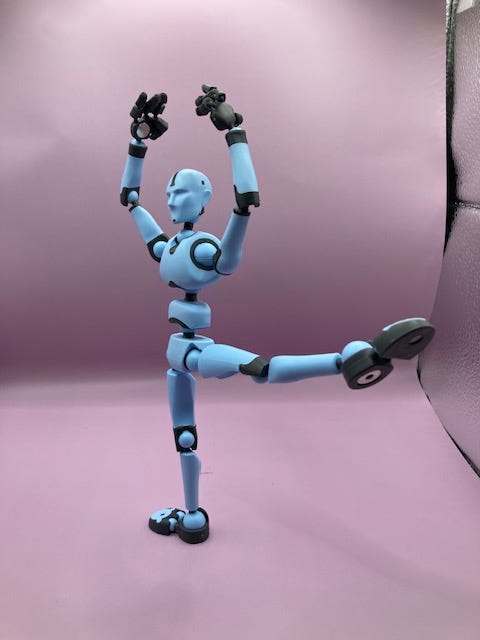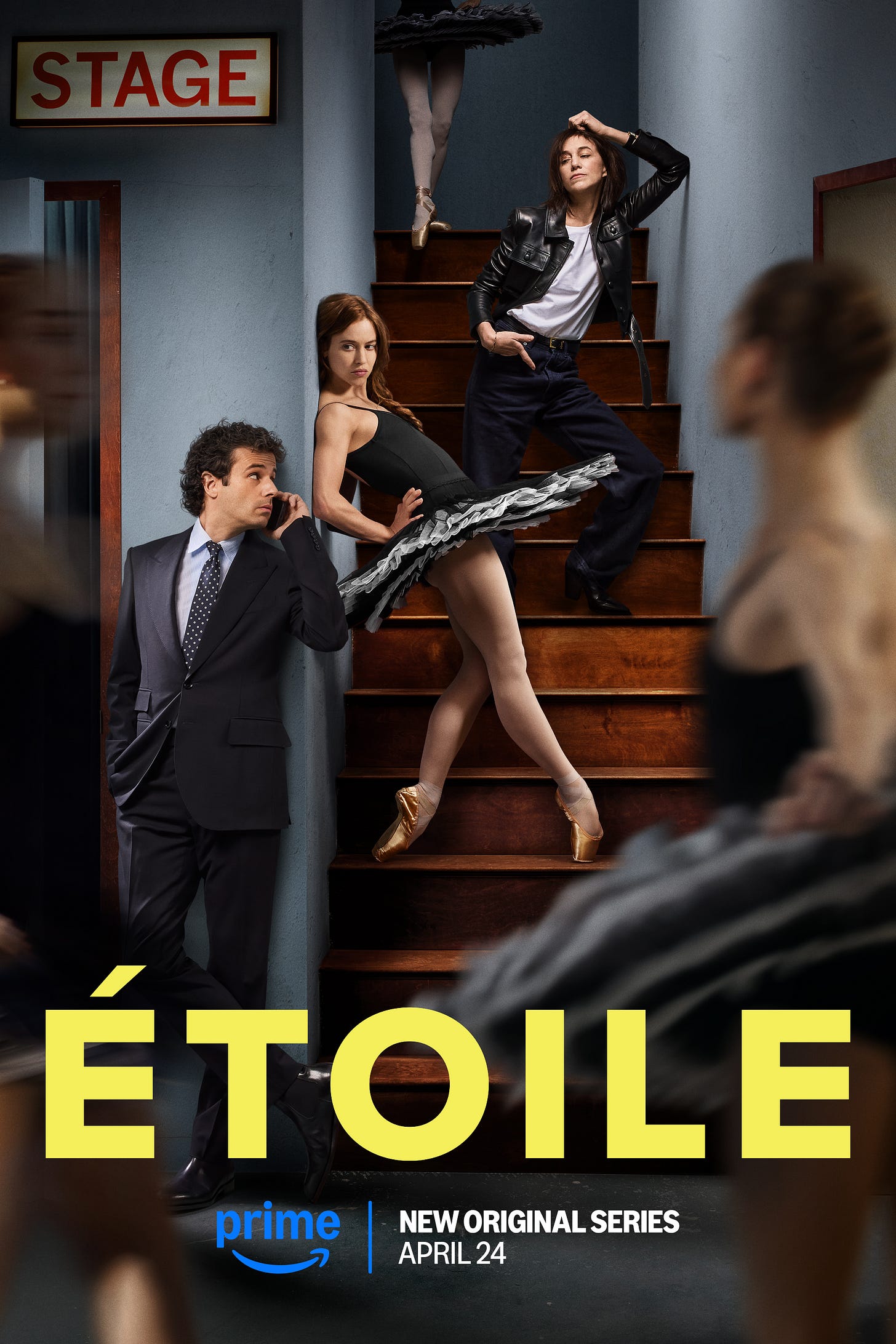French For Dancers: Rond de Jambe En L'air
French For Dancers
Demystifying dance terminology and steps for dancers and dance-lovers!
Issue 35: Rond de Jambe en L’Air
Bonjour! Welcome to French For Dancers
Apologies for the link to DianneDancewear last week that took many of you to an “on break for restocking” message. That caught me by surprise, too! I will let you know when they are up and running their Etsy shop again.
Parlez-Vous Ballet?
(Do you speak Ballet?)
ROND DE JAMBE EN L’AIR
(ron-duh-jomb on-lair)
We know that rond de jambe means” circle of the leg” and en l’air means “in the air,” so rond de jambe en l’air means “circle of the leg in the air.”
As I mentioned in last week’s newsletter, grand rond de jambe and rond de jambe en l’air are sometimes used interchangeably, or have slightly different meanings to different techniques and teachers. For our purposes, I will use grand rond de jambe to mean the full circle of the leg performed off the ground, and rond de jambe en l’air to mean the smaller circle traced with the toes near the retiré/passé position, followed by an extension out to 2nd position.
Unlike a regular rond de jambe, this one does not move the whole leg, but moves the lower leg, from the knee down. The leg is brushed (dégagé) or extended (développé) to the side, into a 45- or 90-degree angle. It is important to hold the standing leg steady and turned out so that the movement of the working leg doesn’t cause the body’s weight to shift or alignment to twist.
From there, the foot/toes of the working leg move in towards the standing leg’s knee, as if to come into a retiré or passé position. But instead, the toes trace a small circle (Vaganova) or triangle (Cecchetti) close to the knee while holding the working leg thigh as still as possible.
For an en dehors (outside) rond de jambe, the toes move in towards the knee, then slightly forward, then extend back out to 2nd position. For en dedans (inside), the toes move towards the front of the knee, then back to the knee, before extending out. The inside arch and heel of the lifted foot should aim forward throughout.
The whole movement is done smoothly, like stirring a cup of tea. For a double rond de jambe en l’air, two small circles (or triangles) are drawn in the same direction before extending out. The accent for rond de jambe en l’air is always on the extension “out,” even when doubled.
Savoir-Faire
(Know-How)
Student Tip:
This is NOT the Can-Can! Just like in petit battement, the movement is done with the lower leg, and the thigh must hold its position in 2nd.
Use your turnout muscles to control the thigh, so that it does not rotate forward in the hip. To check if you’re doing it right, place your hand on your inner thigh and maintain gentle pressure there. You will feel the thigh rolling in toward your hand if you aren’t holding on to your turnout.
Once you have gained the strength to control and perform this step on flat foot, you can try it in relevé, which further challenges your turnout and control. Pay extra attention to your hip flexors in both legs!
Teacher Tip:
Beginner students should master the three points of the rond de jambe en l’air “triangle” before joining them together into one movement: à la seconde, to the knee, to the front of the knee – and in reverse. Once they feel the correct range of movement, then they can work on smoothing it out into a circle or oval.
More advanced dancers can bring the heel slightly (and only slightly!) behind the knee as part of the rond de jambe, but only once they are able to execute the step with full turnout. It should still look like a gentle stir of a cup of tea, not a large vat of thick soup!
À La Carte
(From the Menu)
Recommendations, reflections, and/or useful links
Étoile (Amazon Prime) is a drama series from the creators of Gilmore Girls and The Marvelous Mrs. Maisel. It centers on two ballet companies, one in New York, one in Paris, who decide to swap principal dancers to generate publicity and ticket sales. While it’s not perfect by any means, I found it highly amusing for its over-the-top characters and semi-realistic pastiche of the dance world.
A few things I love about it are the use of real spoken French (with subtitles) and French actors, as well as the excellent presence of professional dancers throughout the series – not just as background, but with featured performances and some character roles. I had fun spotting some of my favorite dancers throughout the series! And where dance “doubles” for the actors appear, it’s beautifully filmed and presented.
Sadly, Amazon just announced that they were canceling the second season of the show. Was it too niche of a show? Perhaps, but I’m going to miss the gorgeous performances, witty dialogue – in two languages – and beautiful shots of NYC and Paris.
Please note: while the dancing is beautiful, the themes and language are more adult, and the show has a TV-14 rating. As the French say, “pas devant les enfants” or not in front of the children!
Merci!
(Thank you!)
Thank you for reading this newsletter! If you have friends who might enjoy this, please share the link with them!
- Peggy








